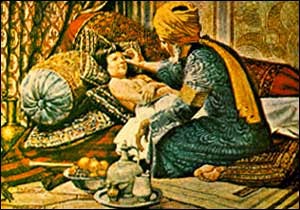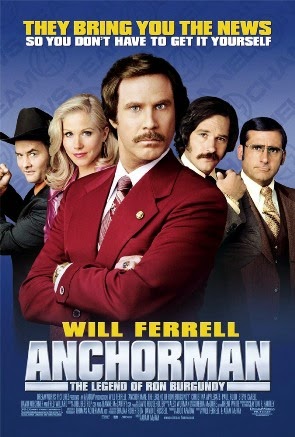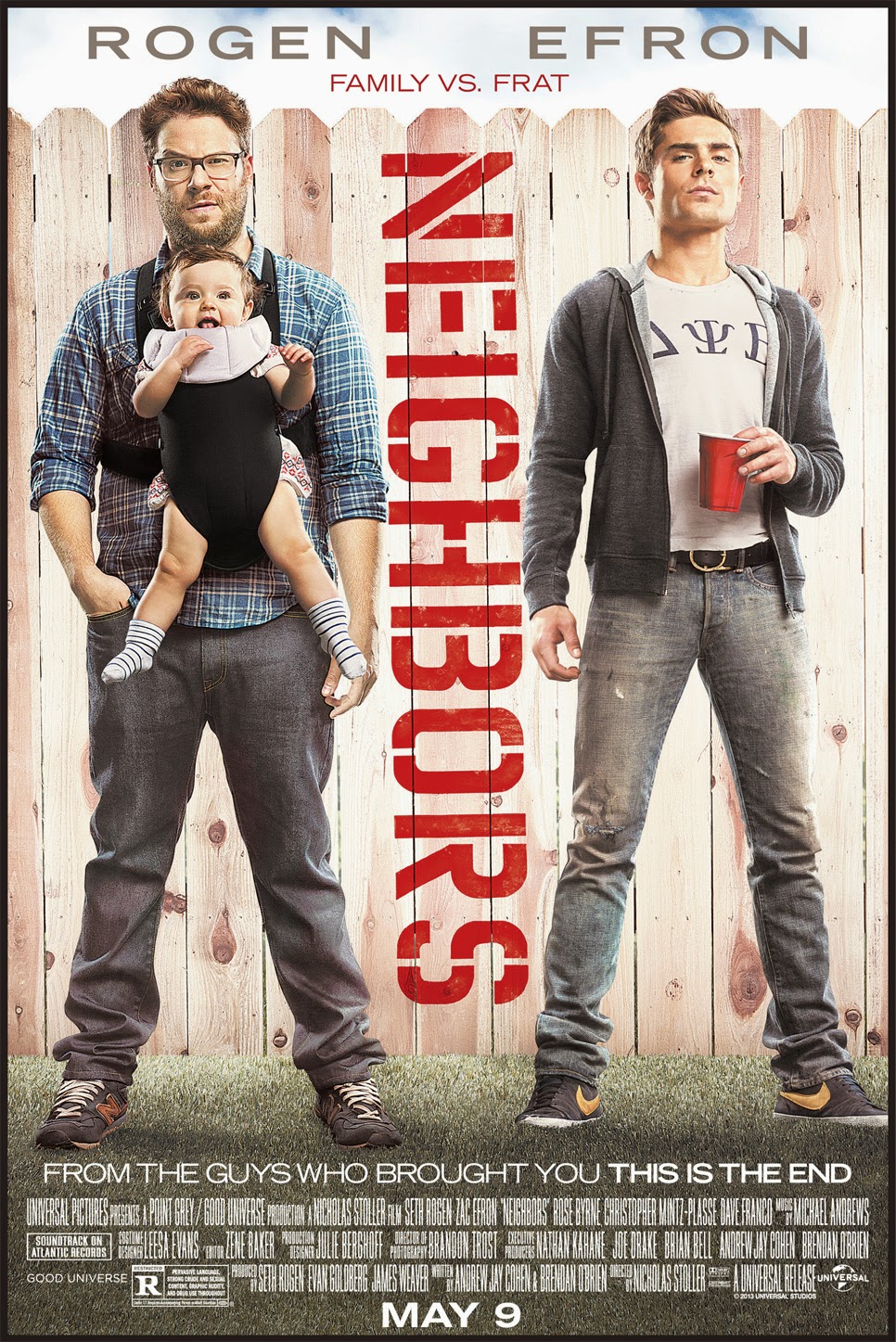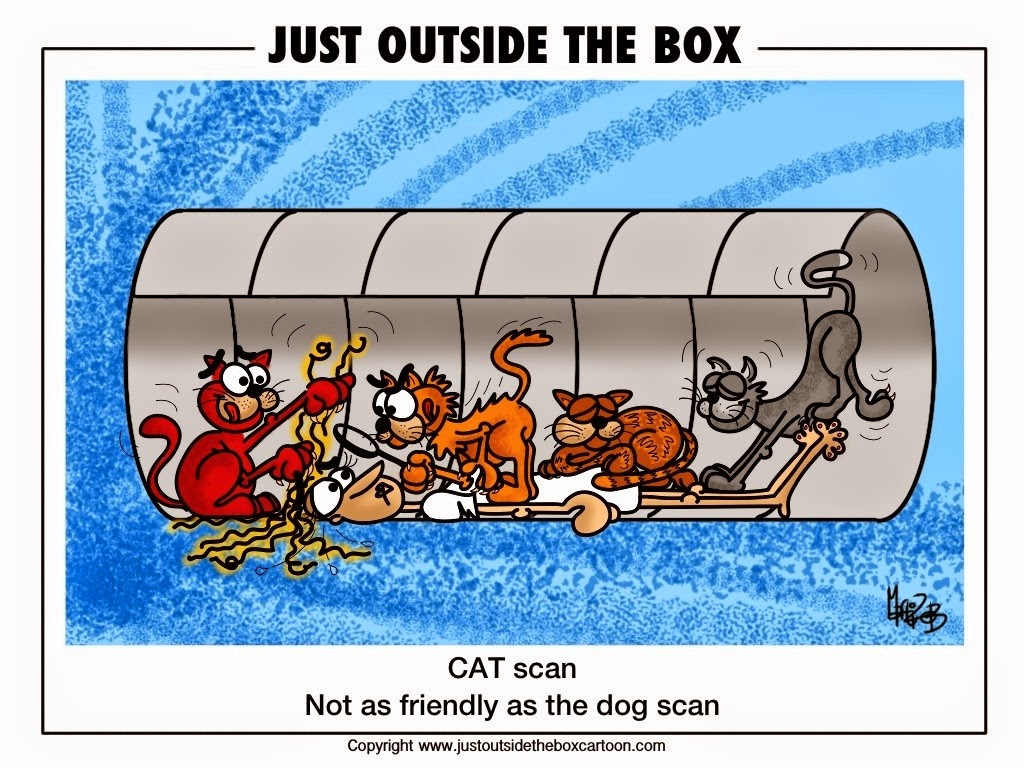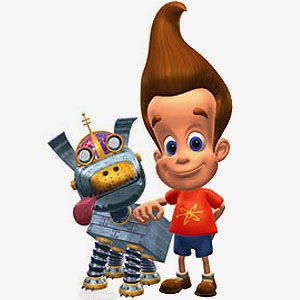You are thinking about pursuing studies in medicine. You have enrolled in all the necessary courses at school to qualify you for the grueling application process and you are actively looking for volunteer opportunities. So why the need to be active in your community?
Today, I want to talk a little about the history of medicine. Around 3000 BC (and no I was not alive then if you are wondering) the middle east was a hotbed for civilizations who were in transition from being mainly nomadic to more settled. This “land between the rivers” – Mesopotamia – was ruled by many successive great kingdoms including the Akkadian, Babylonian, and Assyrian empires. Thanks to many archaeological and written remains we have discovered that healing practices indeed existed and were established during these times.
Mesopotamian medicine was predominantly religious and was delivered by a team of healers: the seers who would diagnose based on divination, the exorcists who would expel demons, and finally the physician priests who actually treated the sick mostly with charms, drugs, and some surgical procedures. OK, so this intensely codified approach (which meant very little opportunity for discussion) to healing that dominated the Mesopotamian kingdoms would not be able to adapt or improve much over time and would ultimately not contribute much to the Greek rational medicine that would come a later and evolve into today’s medicine.
So why is it important? For two reasons:
Firstly, by understanding the history of medicine you will better appreciate the importance of your role as a physician in your community – regardless if you are a primary care physician on the front line or a radiologist who works in the back ground. What is important is to feel connected and part of your community.
Secondly, it is interesting to see that though Mesopotamian medicine recognized very early on that factors like cold, alcohol, and unhygienic conditions affected health, they were enable to advance and evolve their medicine as Ancient Greece did through ongoing experimentation and discussion. Moral of the story? Medical research rocks!
Do you remember the Babylon 5 series? It came many, many, many years later! Have a peek to decompress and…
… I’ll see you in the blogosphere.
Pascal Tyrrell
Who is Going to the Karolinska Institute this Summer? Helena Lan Is, That’s Who!!!!

The Karolinska Institutet is one of the world’s leading medical universities and is located in Stockholm, Sweden. Did you know that in 1895 Alfred Nobel appointed the Karolinska Institutet to annually award the Nobel Prize in medicine or physiology? Now you do.
So, you may have read my previous post about “Connectory”. Well today I want to talk to you about one of my Research Opportunity Program students at the University of Toronto, Helena Lan. Not only was she a star student with me last summer (see her timeline post here) but she has continued on with our MiVIP group contributing to a systematic review on research methodology and biostatistics in medical imaging (stop rolling your eyes, it IS an interesting topic!).
Well she just found out that that she has been invited to work at the Karolinska Institute this summer as part of the Summer Research Abroad Program at the University of Toronto which is sponsored by the the Centre for International Experience. WOW!!!

Her supervisor will be Dr. Sofia Johansson, an assistant professor at Karolinska Institutet. Her research is focused on natural killer cell biology. You can find her research interests here.
Want to know about what natural killer cells do as part of our innate immune system? Watch this cool video.
Cool right? Well, I enjoyed it anyway. Maybe you need to watch Mr Brightside by The Killers to recover and…
… I’ll see you in the blogosphere.
PS: Congratulations Helena!!!
Pascal Tyrrell
Who’s in Agreement?
So, let’s say you have invited everyone over for the big game on Sunday (Superbowl 49) but you don’t have a big screen TV. Whoops! That sucks. Time to go shopping. Here’s the rub: which one to get? There are so many to chose from and only a little time to make the decision. Here is what you do:
1- call your best friends to help you out
2- make a list of all neighboring electronics stores
3- Go shopping!
 OK, that sounds like a good plan but it will take an enormous amount of time to perform this task all together and more importantly your Lada only seats 4 comfortably and you are 8 buddies.
OK, that sounds like a good plan but it will take an enormous amount of time to perform this task all together and more importantly your Lada only seats 4 comfortably and you are 8 buddies.
As you are a new research scientist (see here for your story) and you have already studied the challenges of assessing agreement (see here for a refresher) you know that it is best for all raters to assess the same items of interest. This is called a fully crossed design. So in this case you and all of your friends will assess all the TVs of interest. You will then make a decision based on the ratings. Often, it is of interest to know and to quantify the degree of agreement between the raters – your friends in this case. This assessment is the inter-rater reliability (IRR).
As a quick recap,
Observed Scores = True Score + Measurement Error
And
Reliability = Var(True Score)/ Var(True Score) + Var(Measurement Error)
Fully crossed designs allow you to assess and control for any systematic bias between raters at the cost of an increase in the number of assessments made.
The problem today is that you want to minimize the number of assessments made in order to save time and keep your buddies happy. What to do? Well, you will simply perform a study where different items will be rated by different subsets of raters. This is a “not fully crossed” design!
However, you must be aware that with this type of design you are at risk of underestimating the true reliability and therefore must, therefore, perform alternative statistics.
I will not go into statistical detail (today anyway!) but if you are interested have a peek here. The purpose of today’s post was simply to bring to your attention that you need to be very careful when assessing agreement between raters when NOT performing a fully crossed design. The good news is that there is a way to estimate reliability when you are not able to have all raters assess all the same subjects.
Now you can have small groups of friends who can share the task of assessing TVs. This will result in less assessments, less time to complete the study, and – most importantly – less use of your precious Lada!
Your main concern, as you are the one to make the purchase of the TV, is still: can you trust your friends assessment score of TVs you did not see? But now you have a way to determine if you and your friends are on the same page!
Maybe this will avoid you and your friends having to Agree to Disagree as did Will Ferrell in Anchorman…
Listen to an unreleased early song by Katy Perry Agree to Disagree, enjoy the Superbowl (and Katy Perry) on Sunday and…
…I’ll see you in the blogosphere!
Pascal Tyrrell
The story behind Connectory…
So, you are reading our blog thinking Pascal is a nut – that much is clear – but what of all the students plugged into his group? Are they nuts too?
 Well maybe, but today I am going to talk to you about the group of four (not the group of seven) who started small and grew to be Connectory. John, Maria, Natasha, and Roger met in a graduate course at the University of Toronto and decided to work together on a project about innovation. That’s when they met me, joined “the program”, and got busy! Starting any endeavour from scratch is no easy task. All four had never met before, all came from very different academic backgrounds, and though their initial project was for “credit” the rest was on their own time.
Well maybe, but today I am going to talk to you about the group of four (not the group of seven) who started small and grew to be Connectory. John, Maria, Natasha, and Roger met in a graduate course at the University of Toronto and decided to work together on a project about innovation. That’s when they met me, joined “the program”, and got busy! Starting any endeavour from scratch is no easy task. All four had never met before, all came from very different academic backgrounds, and though their initial project was for “credit” the rest was on their own time.
There were some rough times at first but with perseverance comes success and Connectory was born and is just finishing up its first project as a new start-up business. Wow!
Essentially Connectory is a data management solutions software development consulting group that operates in the healthcare space. Check out their webpage here.
Ok, so what? Well this post is not only to congratulate these four on a job well done but also to encourage you to do the same. One thing is for sure: if you don’t try you will not succeed – ever. My programs are all about learning, trying new stuff, benefiting from your successes as well as your failures, and wait for it… giving back. Yup as Uncle Ben said in Spiderman: “With great power comes great responsibility“.
Just wanted to share a good story from our group with you today.
Listen to Bulletproof by La Roux to get pumped and…
… I’ll see you in the blogosphere!
Pascal Tyrrell
Happy Late New Year 2015!!!
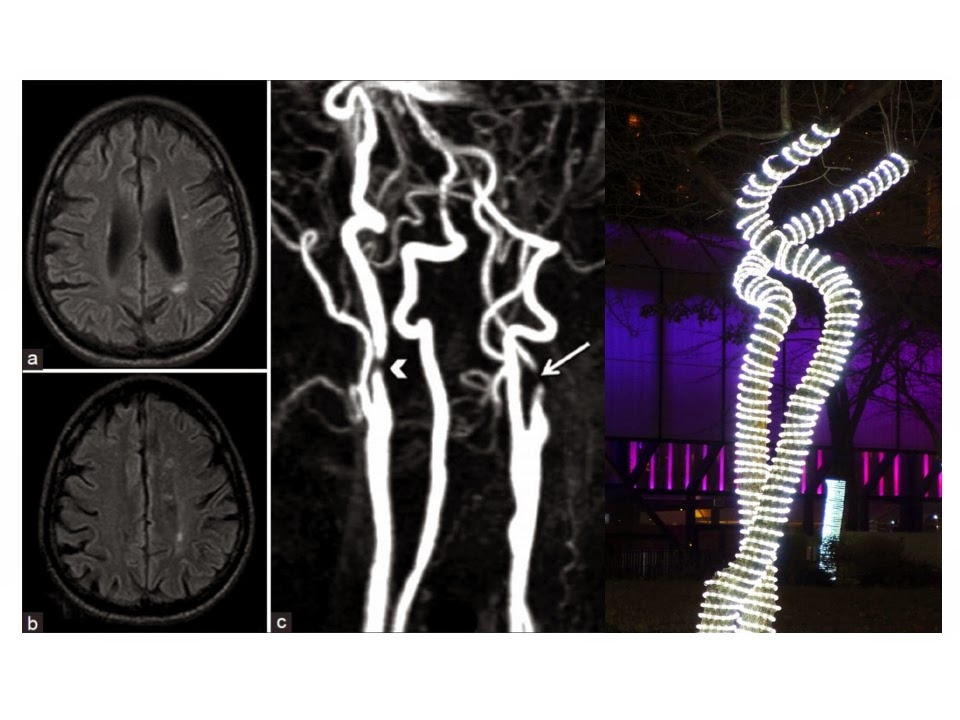 |
| The Moody Tree |
Ok, so I may have taken a longer break than I should have. Where was I you ask? I was enjoying some R&R with my family. My kids are at great ages – 15, 11, and 6. Then, of course, when I got back to my desk – whammo! The deluge of work. This morning, as I sat on the GoTrain on the way into Toronto, I thought of you and happily sat down to write my first post of 2015.
First, a thank you for your readership. We are soon approaching our first anniversary (next month) and my programs (MiVIP and MiB) and this blog are chugging along famously… all because of you!
 |
| Chicago Bean |
Next, a funny story to explain the picture above. When I attended the RSNA last December (see my post here on this event) I brought along my old film camera for fun as I enjoy photography and decided to reminisce a little. To your right is a picture of the Chicago skyline reflected on the “Bean“. See me?
I hadn’t developed film in so long that I almost ruined it – in my laundry room between all of my family’s clothes, the ironing board, buckets, detergents… Anyway, I also had with me my trusted digital for snaps and one evening I was invited to a function at my boss’ hotel and he said to me:”Let me know what you think of the Christmas lights on the trees in front the hotel on your way in”. Alan Moody is an uber-radiologist, the chair of our department, and loves imaging the carotid arteries. As our minds often operate on the same wave lengths, I took the picture and voila – the Moody Tree was born!
There is no end to the fun we have here in the Department of Medical Imaging…
Even though this is not a “MiWORD” post how about you wish a belated Happy New Year to someone you have not been in touch with yet? Send them a quick text or better yet, send them the link to this post and tell them to visit the Moody Tree next time they are in Chicago during the holidays…
See you in the blogosphere,
Pascal
Who is your neighbor?
Classic Seth Rogan movie. Today we will be talking about good neighbors as a followup to my first post “What cluster Are You From?“. If you want to learn a little about bad neighbors watch the trailer to the movie Neighbors.
So let’s say you are working with a large amount of data that contains many, many variables of interest. In this situation you are most likely working with a multidimensional model. Multivariate analysis will help you make sense of multidimensional space and is simply defined as a situation when your analysis incorporates more than 1 dependent variable (AKA response or outcome variable).
*** Stats jargon warning***
Mulitvariate analysis can include analysis of data covariance structures to better understand or reduce data dimensions (PCA, Factor Analysis, Correspondence Analysis) or the assignment of observations to groups using a unsupervised methodology (Cluster Analysis) or a supervised methodology (K Nearest Neighbor or K-NN). We will be talking about the later today.
*** Stats-reduced safe return here***
Classification is simply the assignment of previously unseen entities (objects such as records) to a class (or category) as accurately as possible. In our case, you are fortunate to have a training set of entities or objects that have already been labelled or classified and so this methodology is termed “supervised”. Cluster analysis is unsupervised learning and we will talk more about this in a later post.
Let’s say for example you have made a list of all of your friends and labeled each one as “Super Cool”, “Cool”, or “Not cool”. How did you decide? You probably have a bunch of attributes or factors that you considered. If you have many, many attributes this process could be daunting. This is where k nearest neighbor or K-NN comes in. It considers the most similar other items in terms of their attributes, looks at their labels, and gives the unassigned object the majority vote!
This is how it basically works:
1- Defines similarity (or closeness) and then, for a given object, measures how similar are all the labelled objects from your training set. These become the neighbors who each get a vote.
2- Decides on how many neighbors get a vote. This is the k in k-NN.
3- Tallies the votes and voila – a new label!
All of this is fun but will be made much easier using the k-NN algorithm and your trusty computer!
So, now you have an idea about supervised learning technique that will allow you to work with a multidimensional data set. Cool.
Listen to Frank Sinatra‘s The Girl Next Door to decompress and I’ll see you in the blogosphere…
Pascal Tyrrell
MiWord of the Day Is… Haptoglobin!
 Just got back from the RSNA! Wow what a big conference – 56,000 people this year. McCormick place in Chicago, Illinois (where the conference is held) feels like an airport it is so big.
Just got back from the RSNA! Wow what a big conference – 56,000 people this year. McCormick place in Chicago, Illinois (where the conference is held) feels like an airport it is so big.
Love Chicago. Great city.
Of course, I had the pleasure of attending a bunch of great presentations and today I will introduce you to one of them. Tina Binesh Marvasti (say that 7 times fast!) presented on the topic of Haptoglobin. No, not Hobgoblin (not sure who that is? See here) or his infamous green predecessor (see here).
So, what is Haptoglobin you ask? It is a serum protein that binds free hemoglobin – resulting from the breakdown of red blood cells – and functions to prevent loss of iron (contained in the heme group) through the kidneys and to protect tissues from the highly reactive heme groups. Essentially a housekeeping protein that helps to recycle hemoglobin as part of the red blood cell life cycle. Now what if your ability to clean-up free hemoglobin was impaired? Well, quite simply you would be putting at risk those sensitive tissues that come into contact with free hemoglobin. 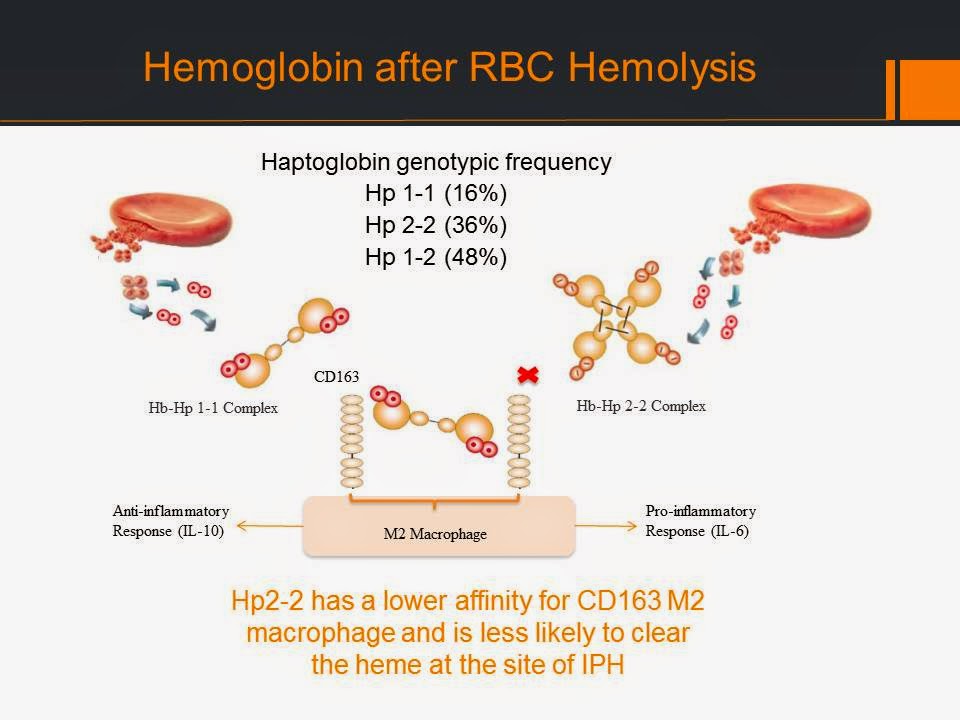 One important example of this is vessel walls affected by atheroma (AKA plaque). Sometimes these atheroma can bleed (called intraplaque hemorrhage or IPH) which worsens the whole situation. Typically, your body responds by sending the clean-up crew including the Hobgoblin (or haptoglobin, I always get these two confused).
One important example of this is vessel walls affected by atheroma (AKA plaque). Sometimes these atheroma can bleed (called intraplaque hemorrhage or IPH) which worsens the whole situation. Typically, your body responds by sending the clean-up crew including the Hobgoblin (or haptoglobin, I always get these two confused).
When people have the recessive genotype (Hp 2-2) of the Hp gene they produce less haptoglobin and therefore are at increased risk of damage from free hemoglobin (or more specifically the heme groups).
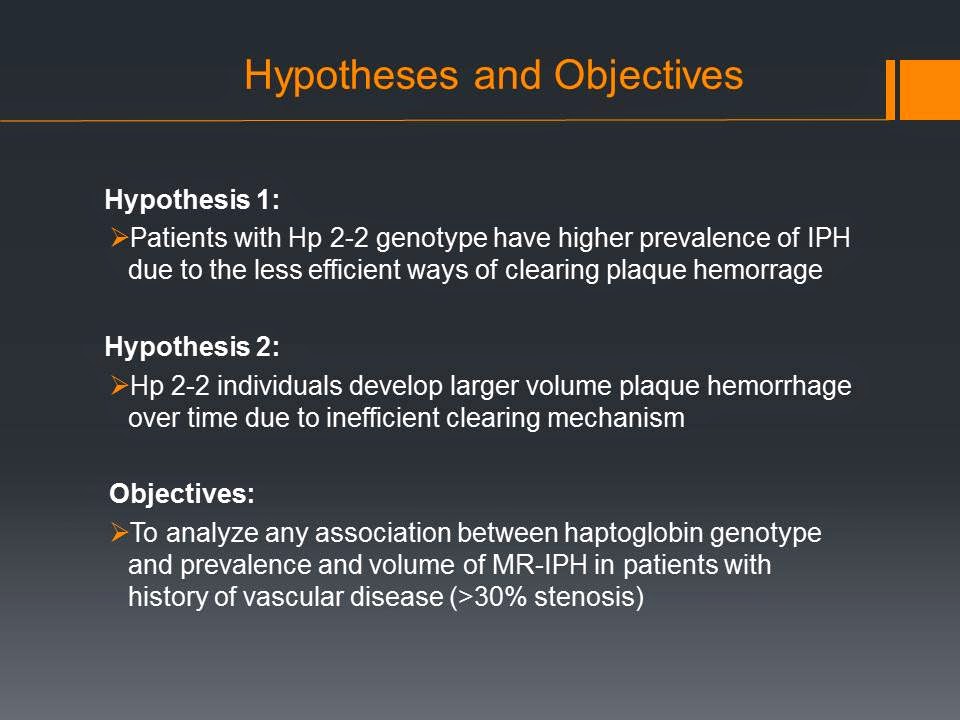 Tina and friends hypothesized the following:
Tina and friends hypothesized the following:

And she found that having the recessive Hp2-2 genotype was associated with a higher prevalence of IPH in a group of 80 patients (average age of 73 yrs). She also found that the IPH volume of Hp2-2 patients worsened over time.
So what is the take home? The Haptoglobin genotype is associated with IPH which is a biomarker of high risk vascular disease and could identify populations at higher risk of developing cardiovascular events.
Now for the fun part (see the rules here), using Haptoglobin in a sentence by the end of the day:
Serious: Hey Bob, did you know that a recessive haptoglobin genetype may contribute to an increased risk of cerebrovascular disease?
Less serious: My GP suggested that based on my recessive hobgoblin genotype I should consider a healthier lifestyle. Funny, I always figured Doc Ock to be the one to watch for…
OK, watch the Spider-man 2 trailer to decompress and I’ll see you in the blogosphere…
MiWord of the Day Is… CAT scan!
A what scan? I am actually a cat guy myself. Not to say I don’t love dogs but if I had to make a choice…
I just finished reading a fantastic book by David Dosa entitled “Making Rounds With Oscar”. The premise of the book is a story about an extraordinary cat but the subject matter is very serious – dementia and end-of-life care in the elderly. Have a gander.
So what the heck is a cat scan and what does it have to do with medical imaging?
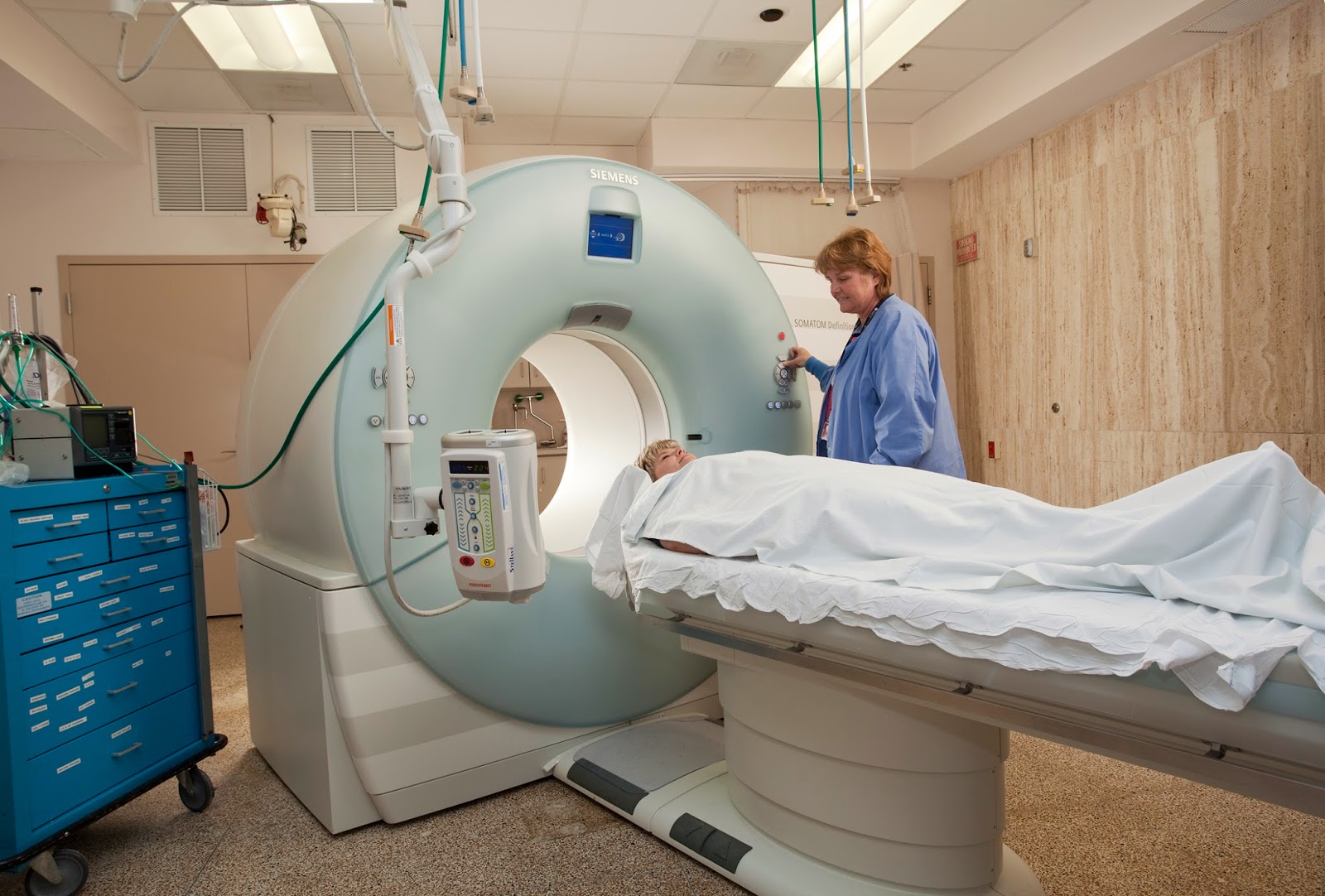 CT scans – also referred to as computerized axial tomography (CAT) – are special X-ray tests that produce cross-sectional images of the body using X-rays and a computer. CT was developed independently by a British engineer named Sir Godfrey Hounsfield and Dr. Alan Cormack and were jointly awarded the Nobel Prize in 1979. Yes, more Nobel prize winners…
CT scans – also referred to as computerized axial tomography (CAT) – are special X-ray tests that produce cross-sectional images of the body using X-rays and a computer. CT was developed independently by a British engineer named Sir Godfrey Hounsfield and Dr. Alan Cormack and were jointly awarded the Nobel Prize in 1979. Yes, more Nobel prize winners…
In a nutshell, x-ray computed tomography:
– uses data from several X-ray images of structures inside the body and converts them into 3D pictures – especially useful for soft tissues.
– emits a series of narrow beams through the human body, producing more detail than standard single beam X-rays.
– is able to distinguish tissues inside a solid organ. A CT scan is able to illustrate organ tear and organ injury quickly and so is often used for accident victims.
– is analyzed by radiologists.
Unfortunately, unlike MRI scans, a CT scan uses X-rays and therefore are a source of ionizing radiation.
Now for the fun part (see the rules here), using CAT Scan in a sentence by the end of the day:
Serious: Hey Bob, did you know that the recorded image of a CAT Scan is called a tomogram?
Less serious: My GP suggested that howling at the moon at night is not normal behavior and he wants to send me for a CAT scan. What? No way, I’m allergic to cats…
OK, listen to Cat Stevens to decompress and I’ll see you in the blogosphere…
MiWord of the day is… Atom!
MiWord, a post on Sunday?!!! Well, I have been very busy lately and fell behind on my blog so I am now playing a little catch-up…
I was waiting in Logan airport for my flight back from a presentation in Boston – what unbelievably crazy traffic in that city – and I was texting my kids with my laptop open and my tablet next to me on the seat when I thought: I feel a little like Jimmy Neutron! I enjoyed watching that show with my kids. Lots of fun. Anyway, that idea of crazy science and the internal structure of the atom as displayed on Jimmy’s t-shirt may be the premise for a great kids show but it also led to the development of MRI. What?!!! You say.
MRI is an imaging technique. Maybe so, but it is particular in that it does not use any classic photographic equipment (film or lenses) or use x-rays as Roentgen did. It simply numerically measures how hydrogen nuclei absorb and release energy in response to particular frequencies. Need a refresher on the structure of an atom? See this post.
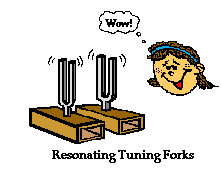 Don’t get it? OK, how about you think of this process as a crazy huge tuning fork. If you were to flick a tuning fork of a certain frequency (pitch) other tuning forks of the same frequency close by will pick up energy from the humming tuning fork and emit a sound in turn. Cool.
Don’t get it? OK, how about you think of this process as a crazy huge tuning fork. If you were to flick a tuning fork of a certain frequency (pitch) other tuning forks of the same frequency close by will pick up energy from the humming tuning fork and emit a sound in turn. Cool.
The nucleus of an atom can absorb energy and then relax by emitting energy in a similar way. Different atoms (or the same atom in different environments) will have different relaxation rates allowing for the identification of the composition of molecules. Ya, maybe a little complicated.

MRI measures how hydrogen nuclei absorb and release energy. Dependent on the location and the environment of the hydrogen atoms the MRI process is able to provide knowledge about the placement of hydrogen atoms in the body and in turn knowledge about the anatomy.
Now for the fun part (see the rules here), using Atom in a sentence by the end of the day:
Serious: Hey Bob, did you know that the atom is the smallest unit that defines the chemical elements and their isotopes?
Less serious: I thought that splitting atoms would produce a large explosion but when I tried using my mom’s perfume “atomizer” it just produced a fine spray and nice smell…
Ok that was a little intense for a Sunday. Watch and listen to Symphony of Science (very cool BBC production) to decompress and I’ll see you in the blogosphere…
Pascal Tyrrell
MiWord of the Day Is… Cinemaradiology!
Yes, it is Halloween today and my kids could barely contain themselves getting ready for school. I suspect today will not be very productive as they count down the minutes before heading out to terrorize my neighbors.
Anyway, how about this for a scary thought: cinemaradiology! In the late 1800’s John MacIntyre at the Gasgow Royal Infirmary experimented with producing X-ray motion pictures. What!!!? He tried exposing film by passing it between the screen of the fluoroscope and the x-ray tube and by simply filming the fluoroscopic screen. This latter method was very difficult because, as all of you budding radiologists know, the images viewed on the fluoroscope screen were dim and of poor resolution at the time.
For years researchers worked on perfecting cinemaradiology. However, during those early years of discovery they lost interest when they realized that sharper images were possible when BOTH patients and investigators were exposed together AND that excessive radiation was a bad thing – duh!
It would only be many many years later that fluoroscope screen technology would be improved to allow for brighter and higher resolution images (and without frying the patient and everyone around!).
To my knowledge, no actors from the cinemaradiology era ever became successful stars in Hollywood…
No need to use the MiWord of the day in a sentence today (see rules here) as I realize you are busy getting ready for Halloween and need a break!
Decompress listening to the classic song Thriller by the King of Pop Michael Jackson and I’ll see you in the blogosphere…
Pascal Tyrrell

